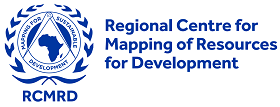IUCN Red Lists of Threatened Species
Established in 1964, IUCN’s Red List of Threatened Species has evolved to become the world’s most comprehensive information source on the global extinction risk status of animal, fungus and plant species. The IUCN Red List is a critical indicator of the health of the world’s biodiversity. Far more than a list of species and their status, it is a powerful tool to inform and catalyse action for biodiversity conservation and policy change, critical to protecting the natural resources we need to survive. It provides information about range, population size, habitat and ecology, use and/or trade, threats, and conservation actions that will help inform necessary conservation decisions.
The IUCN Red List is used by government agencies, wildlife departments, conservation-related non-governmental organisations (NGOs), natural resource planners, educational organisations, students, and the business community. https://www.iucnredlist.org/about/background-history
IUCN Red List of Ecosystems
The IUCN Red List of Ecosystems Categories and Criteria is a global standard for how we assess the conservation status of ecosystems, applicable at local, national, regional and global levels. The Red List of Ecosystems evaluates whether ecosystems have reached the final stage of degradation (a state of Collapse), whether they are threatened at Critically Endangered, Endangered or Vulnerable levels, or if they are not currently facing significant risk of collapse (Least Concern). It is based on a set of rules, or criteria, for performing evidence-based, scientific assessments of the risk of ecosystem collapse, as measured by reductions in geographical distribution or degradation of the key processes and components of ecosystems.
Since the state of conservation of ecosystems is constantly changing, the reality is that a red list represents the equivalent to a photograph of an ecosystem's risk of collapsing at the time of its assessment. The strength of the Red Lists of Ecosystems comes from its regular and periodical application, with the goal of generating a changing image, like a film, of the evolution of the ecosystems threats and their recovery in response to conservation measures. https://iucnrle.org/




